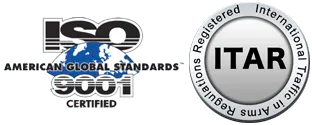PHOTORESIST
Professional Photoresist Application and Removal Services by APD
The dicing process, also known as wafer sawing, is a critical step in semiconductor fabrication, where a large silicon wafer is segmented into individual die or integrated circuits (ICs). In the dicing process, a thin abrasive blade is used to cut through the wafer and singulate the die pieces. This rotating blade can launch particles at high speeds, so adding extra protection to the wafer’s surface may be necessary. Traditionally, a light-sensitive material called photoresist has been used to protect the wafer surface.
Photoresist: A Traditional Protection Method
The photoresist is a light sensitive polymer coating applied to the wafer’s surface before dicing using a spin coating process. When exposed to specific wavelengths of light, the photoresist undergoes a chemical reaction, hardening in the exposed areas and remaining soluble in the unexposed areas. This allows for selective removal of the photoresist layer using a developer solution.
In the context of dicing, the photoresist acts as a sacrificial layer, absorbing the initial impact of the dicing blade and minimizing chipping or damage to the underlying silicon die. After dicing is complete, the remaining photoresist is removed using a cleaning process. That cleaning process usually involves the use of acetone, alcohol, and DI water.
The Role of Water in Dicing
However, the need for a photoresist for protection during dicing is not always mandatory. Modern dicing saws utilize flooding bars to cool the blade, provide lubrication for the dicing process, and help remove debris from the cutting kerf. More importantly, this also creates a thin layer of water on the wafer’s surface during dicing.
This water layer acts as a sacrificial layer similar to photoresist. The water absorbs the initial impact of the particles, mitigating damage to the die surface.
When is Photoresist Recommended for Dicing?
While the water layer offers sufficient protection in many dicing applications, there ar situations where using photoresist can be beneficial:
1. Protection of Sensitive Structures: If your wafer contains delicate or intricate features that could be easily damaged by the mechanical stresses of dicing, a layer of photoresist will help protect them.
2. Debris Reduction: Dicing produces silicon dust and debris that can contaminate your wafer's surface. Photoresist acts as a barrier to prevent the debris from directly contacting the wafer surface. It also makes the debris easier to remove afterward.
3. Chipping Prevention: Dicing can induce chipping along the edges of dies. A photoresist layer helps minimize this risk.
Partner with APD for Photoresist Application and Cleaning
APD’s reputation for delivering exceptional services is built on our skilled team, advanced technology, and unwavering commitment to quality. Partner with us to benefit from our precision and expertise in semiconductor manufacturing.
Contact Us Today
Discover how APD’s advanced services can elevate your projects.
Contact us
for comprehensive information on our capabilities and how we can meet your specific requirements. For tailored details and pricing,
request a quote
with your project specifics.

